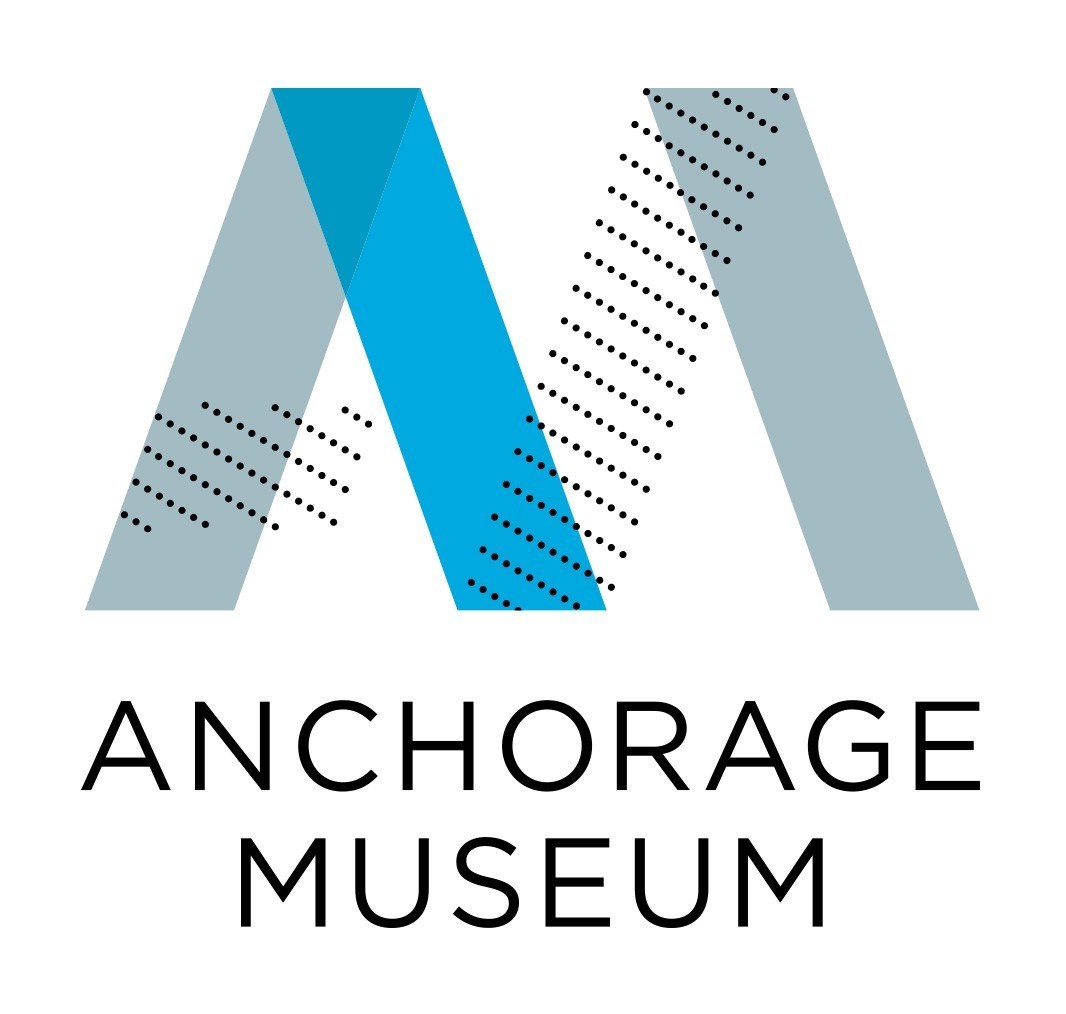 A museum industry leader in the response to climate change, the Anchorage Museum is working to create and highlight radical new forms of research, practice, placemaking, and public art as ways to engage the public around ideas affecting our changing landscapes.
A museum industry leader in the response to climate change, the Anchorage Museum is working to create and highlight radical new forms of research, practice, placemaking, and public art as ways to engage the public around ideas affecting our changing landscapes.
The Arctic is warming on average at a rate twice as fast as the rest of the world, has seen the deepest impact, and will continue to warm at more than double the global rate. Many of the effects already seen are probably irreversible.
In response, the Anchorage Museum gathers a rich community of thinkers, creative practitioners and changemakers to focus on vision, problem solving and positive change. At the center is highlighting Indigenous knowledge, place names and voices, and expanding the understanding of and awareness of Northern people and landscapes, conveying a pivotal and relevant narrative of the North for the world. The Anchorage Museum's projects include:
Activation of the SEED Lab House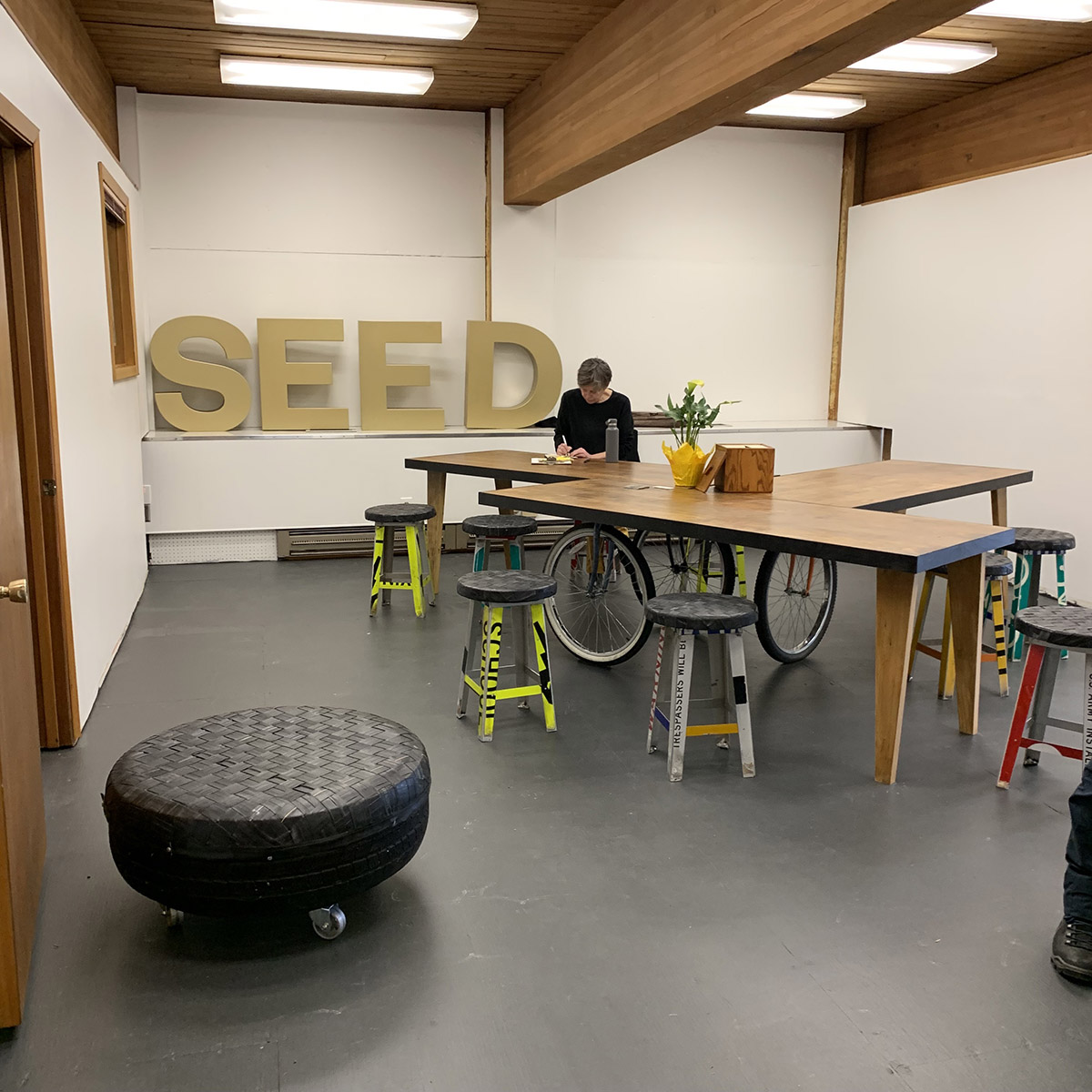
The Museum renovated an empty building in downtown Anchorage to be a prototype of creative and critical climate response, a space and a place for envisioning possible futures. The House hosts ideas of sustainable transportation and energy, civic conversations, and repair workshops and art interventions are continually installed inside the building and on the façade. Through its SEED Lab program, one of the winners of the Bloomberg Public Art Challenge, it develops projects and programs along three themes: Prototype (Creating examples of future solutions); Respond (Language, Visuals, Voices and Action); and Connect (Connections between people and places and connection to landscape as a way to understand, build awareness and respond to climate and global change).
Land Acknowledgement
To move towards the future, the Museum understands that we must recognize and acknowledge the past and value Indigenous knowledge and language. As a response, the Museum offers trainings in land acknowledgement, creates large-scale installations featuring land acknowledgement trainings and Indigenous language and, with community partners, is working towards including Indigenous language and histories in public places.
North x North Festival and the Critical Futures Conference
Two major convenings bring community and creatives together to talk about the future and the role of art and design within a broader ecosystem this spring. The 2020 Critical Futures Creative Conference (April 13-17, 2020) brings people from around the world to invent new language and visuals around climate change and to create shared experiences around contemporary art and critical thinking. The annual North x North Festival (April 17-19, 2020) celebrates connection, creativity, imagination and innovation across the Circumpolar North and convenes people worldwide for a discussion about possible futures. The Festival includes film, food, music and youth convenings. Site-specific installations as part of the event, include Flower Turbines (an individual-scale opportunity to harness wind); a light and sound installation by Annie Mitchell; film discussions with Ric Burns and others; an Aesthetics of Laundry project with Andreas Hoffmann of Greenland; and an exhibition, programs and concert featuring the nexus between art and sound ecology.
Supreme Extreme: Future Emergency Shelters & Kits
A project prototyping for the future climate, Supreme Extreme: Future Emergency Shelters & Kits, focuses on the elements fire, wind, water, and earth. The project will include large-scale art interventions in the form of shelters and emergency survival kits, a largescale sculptural installation titled Spark, an international call for ideas/proposals, a fashion show, a book and pop-up exhibitions.
Alaska River Time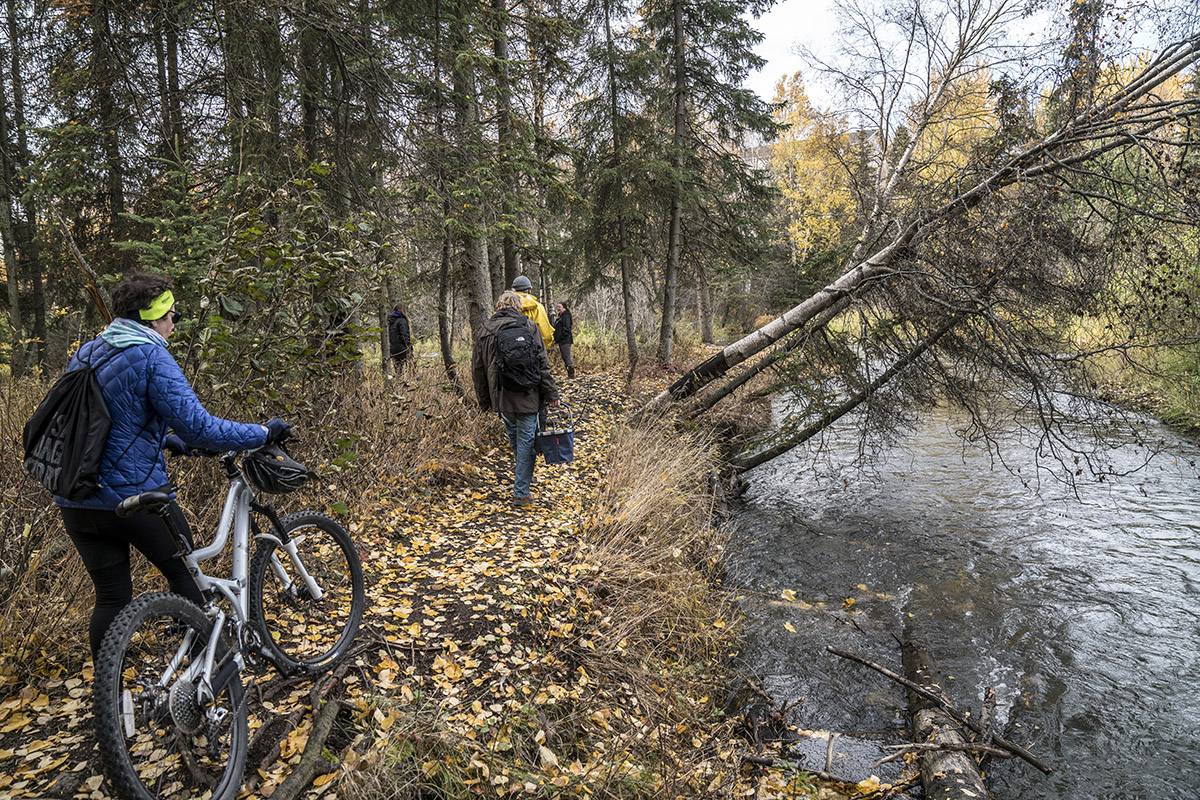
Glaciers are icons of climate change. They are also highly sensitive indicators of present climate conditions, recorders of historical climate, and predictors of climate in the future. Climate scientists research all of these factors by observing glaciers directly, and equally by observing their runoff in rivers and streams. These systems are essential to human populations and wildlife in Alaska, as all life in the Arctic is dependent on glaciers as frozen reservoirs and glacial rivers as conduits for clean water. Human dependency on glaciers and glacial rivers is now greater than ever.
Alaska River Time, at the Anchorage Museum, is a multifaceted artwork by Jonathon Keats that seeks to bolster public appreciation of glaciers, glacial rivers and other Anchorage rivers and streams, and increase people’s understanding of their significance as climate indicator by enlisting rivers as timekeepers. The project will be a series of workshops and public programs, a development of apps around River Time, and an art installation and prototype in the form of an Alaska River Time municipal clock.
Future: Arctic Atlas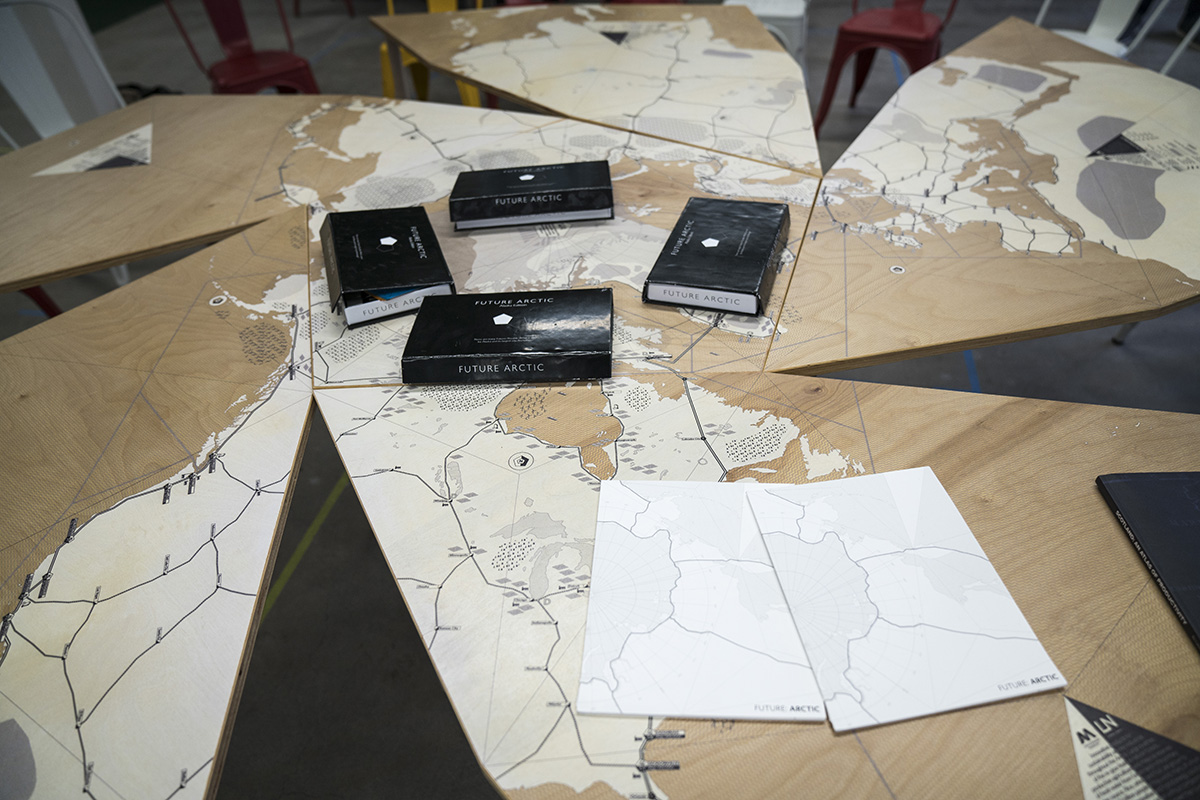
Future: Arctic Atlas is a speculative project, that proposes a future Arctic Loop that will connect communities throughout the North. This circle of infrastructure transports passengers, cargo, energy, water and a host of other services, and is based on the development of the ‘hyperloop’ over the coming 50 years, effectively replacing air travel and providing a more sustainable way of travelling. Future: Arctic Atlas puts the North at the center of worldwide transport in the future while also exploring how the Arctic Loop will affect governance, humanity, ecosystems, resources and connections within the region. Though intentionally highly speculative in its vision, the atlas prompts a new way of having a conversation about the future, issues facing the region and impacting climate change, including energy, food, transportation, and policy.
Rewilding
This is a project working to bring the natural into the urban in creative ways that prompt discussion about climate change and our future. Rewilding includes an urban reforestation project (portable forest), climate walks, creation of a climate change scent, art made from algae, and projections of glaciers and other natural forms on building exteriors and parking lots. It also includes projects with artists such as Mary Mattingly, who is working with the Museum to inform an Ecotopian Library, with creative writing and design workshop on ecotopian Cities.
Polar Placemaking: Words and Visuals for the Future of the Landscape
A series of projects to develop images, color pallets, textures, works, and phrases to a climate-changed future. What is the next term beyond "Anthropocence, Pyrocene" and other academic words? What is the language for a changed world? How do we focus on response versus reaction, action versus activism, solutions versus problem identification? What are the visuals of climate change that connect people to the issues and to the ways we will approach tomorrow.
Firn
Firn is a series of gatherings and conversations, including Youth Summits, a climate concert, Wilderness Week, projects around the themes of GROUND and REFUGE, with commissioned films by youth and professional artists.
It Is Possible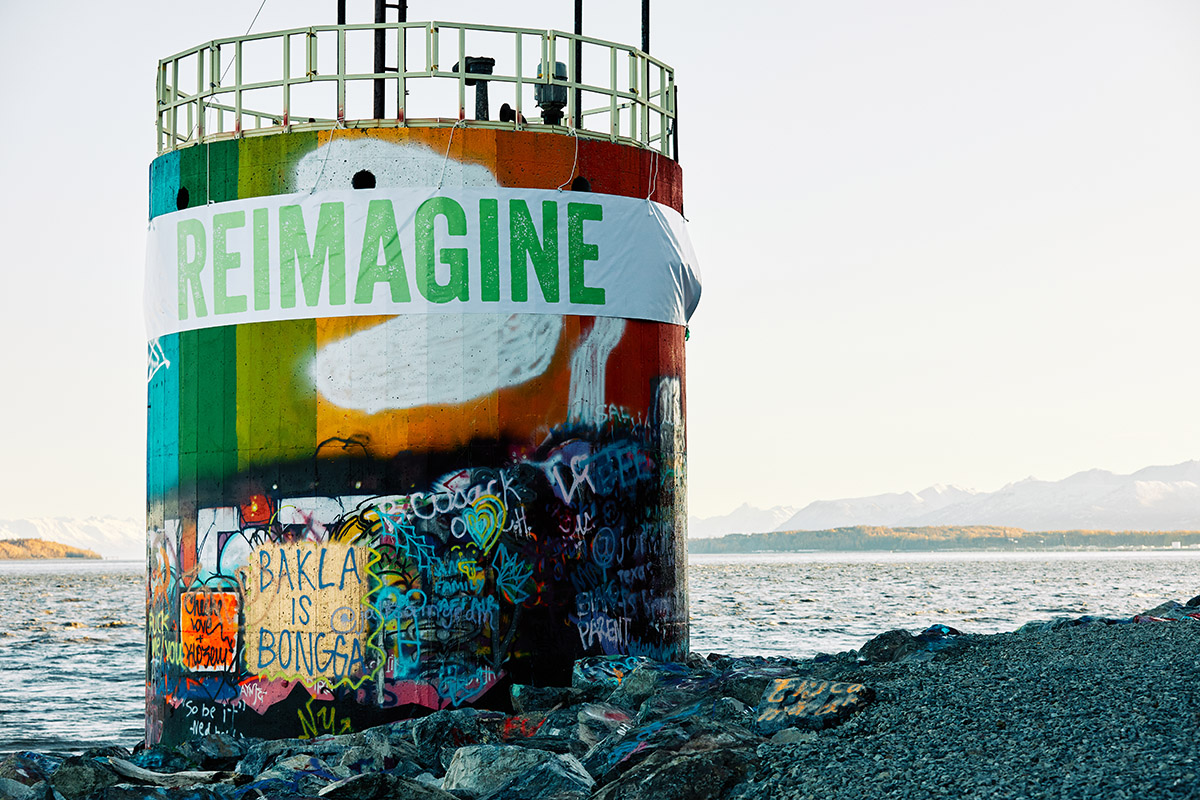
A series of graphic design installations throughout the city of Anchorage that plays with phrases drawn from workshops with a focus on civic solutions. The Anchorage Museum created murals on the side of the Museum’s SEED Lab building and added phrases to a city water tower, bus stops, library, housing, mall, parking garages and other unexpected places. The Museum also worked with youth to create their own images and phrases and produced buttons and t-shirts for youth with the future phrases. The Museum poses questions about what language is needed to focus on the future and to move forward from intractable issues, in conjunction with the Museum for the United Nations’ project MY MARK: MY CITY.
Hghu Hghazdatl: They All Gathered
Hghu Hghazdatl: They All Gathered is a series of projects that bring together divergent communities to explore future positive design and captures senses of belonging in the city, relating to each other, and in relationship to the environment and Indigenous values. In conjunction with Anchorage Design Week 2019, the project, which was curated by Tiffany Shaw-Collinge of Canada, included four temporary site-specific installations in Anchorage.
Collections to Climate
Lastly, Collections to Climate is a convening by the Anchorage Museum in the fall of 2020 with more than a dozen other museums, nationally and internationally, to examine ways museums can talk about climate change through their collections.
Presented within these projects is a unique community of thinkers, creative practitioners and changemakers who focus on vision, problem solving and positive change. The Anchorage Museum believes that by bringing people together in ways that build bridges within and across communities, museums have the ability to strive towards supporting our living culture in making room for deep personal reflections, public dialogue and human action.








Add new comment